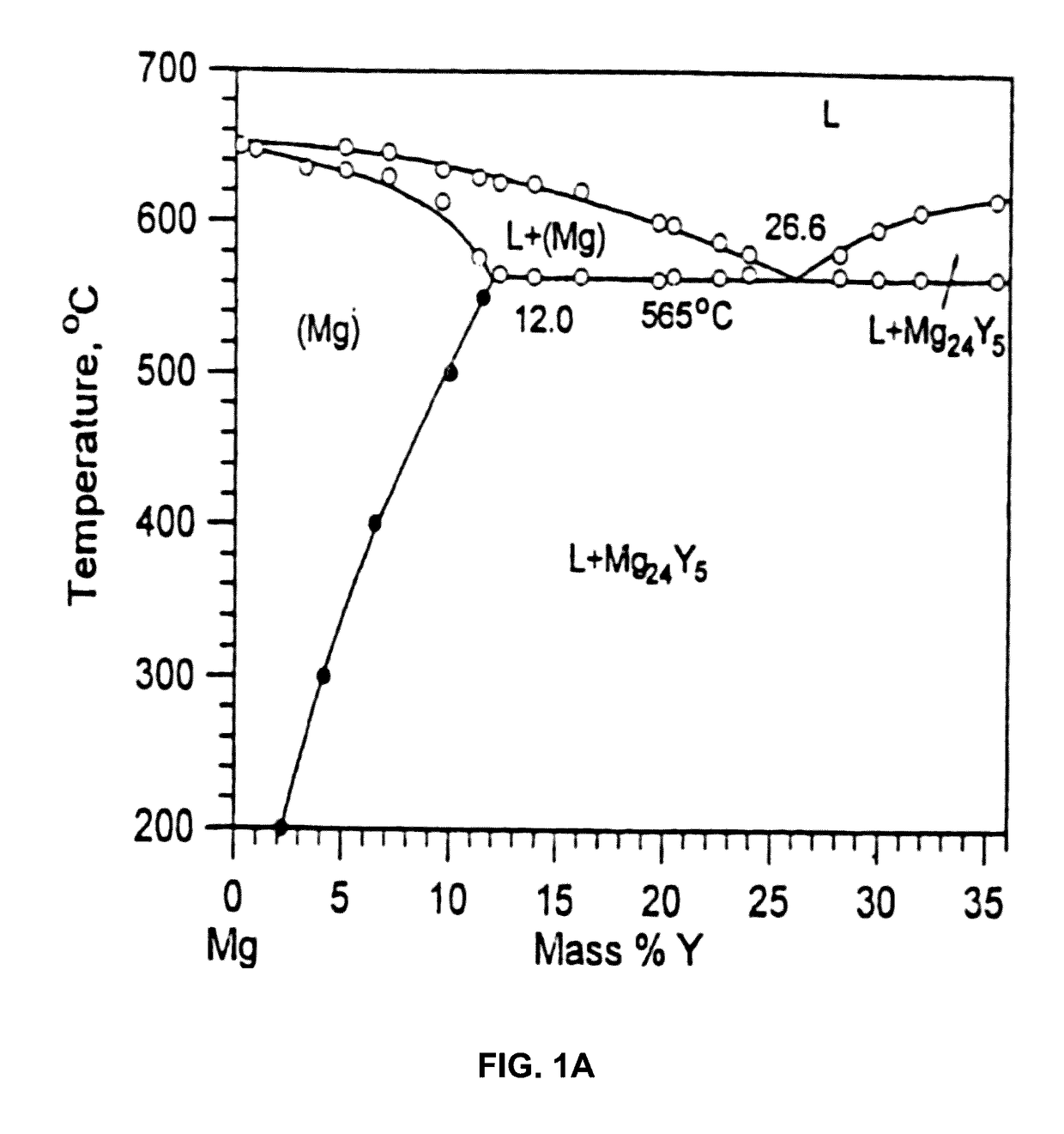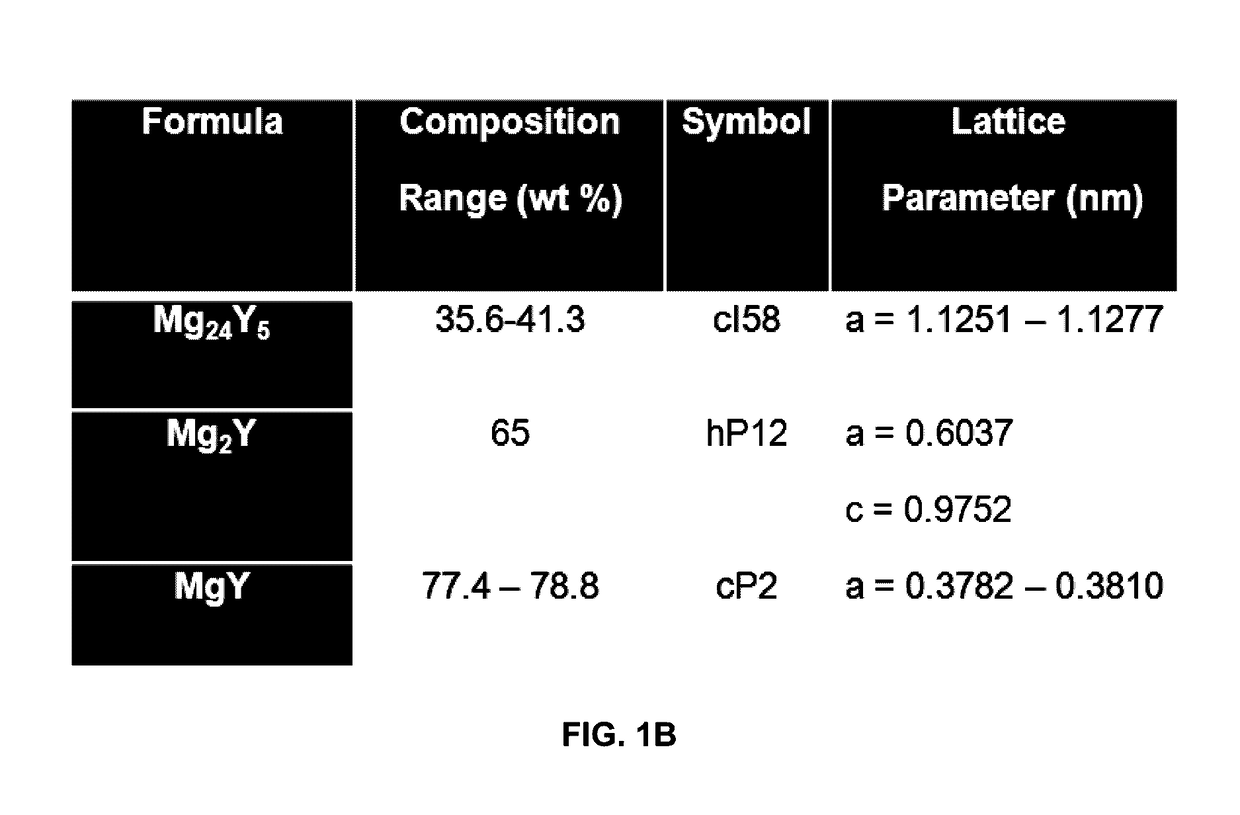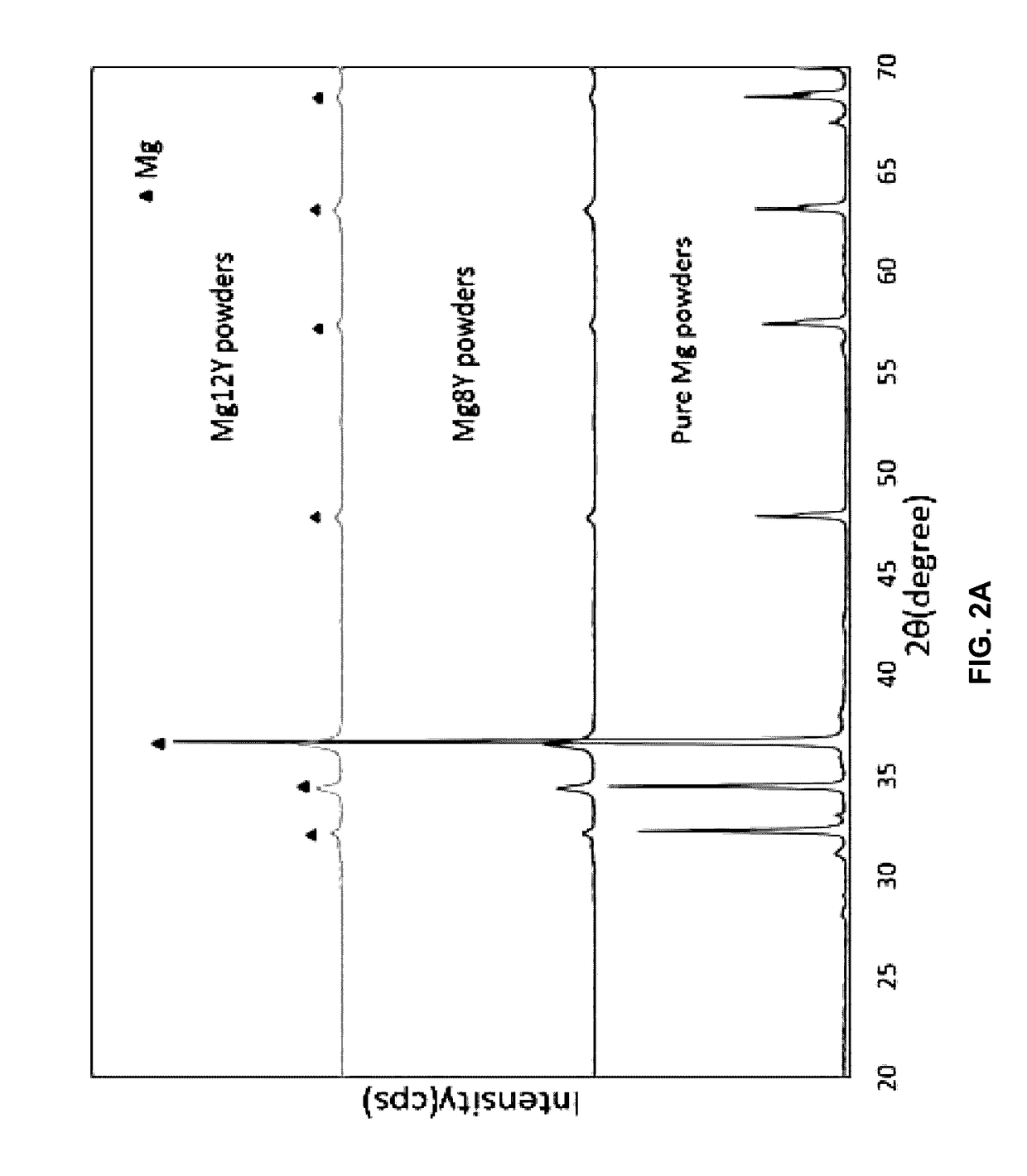Biodegradable Magnesium Alloys and Composites
a technology of biodegradable magnesium alloys and composites, applied in the direction of prosthesis, catheters, surgery, etc., can solve the problems of alloys unsuitable for biomedical implant applications, large and non-uniform microstructures of cast products, and fast degradation
- Summary
- Abstract
- Description
- Claims
- Application Information
AI Technical Summary
Benefits of technology
Problems solved by technology
Method used
Image
Examples
examples
[0060]Two alloy compositions were prepared: the first having 8 wt % of Y in Mg, and the second having 12 wt % of Y in Mg. Elemental Mg (˜60 mesh of 99% purity) and Y (˜69 mesh of 99% purity) were milled using a SPEX mill (Model 8000), located inside a glove box flushed with ultra-pure Ar. All the powder handling took place within the glove box. The SPEX mill was chosen because of its high efficiency. Zirconia balls were used as the milling media, and hardened steel vials were filled with these balls at the ball-to-powder ratio of 20:1, which is a higher ratio than conventionally used. This ratio can be increased upwards to increase the intensity of mixing. Care was taken not to fill more than half of the available volume. Since the powders are on the coarser side, individual powders required milling separately before mixing them together. Though a process control agent such as stearic acid can be useful in a mechanical alloying process, no process control agent was used in this exam...
PUM
| Property | Measurement | Unit |
|---|---|---|
| Temperature | aaaaa | aaaaa |
| Grain size | aaaaa | aaaaa |
| Thickness | aaaaa | aaaaa |
Abstract
Description
Claims
Application Information
 Login to View More
Login to View More - R&D
- Intellectual Property
- Life Sciences
- Materials
- Tech Scout
- Unparalleled Data Quality
- Higher Quality Content
- 60% Fewer Hallucinations
Browse by: Latest US Patents, China's latest patents, Technical Efficacy Thesaurus, Application Domain, Technology Topic, Popular Technical Reports.
© 2025 PatSnap. All rights reserved.Legal|Privacy policy|Modern Slavery Act Transparency Statement|Sitemap|About US| Contact US: help@patsnap.com



